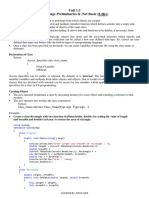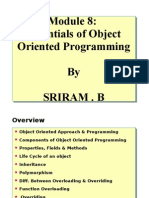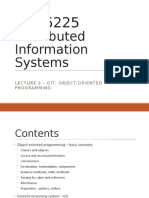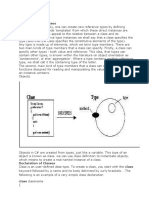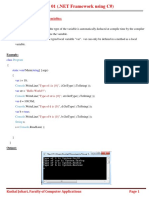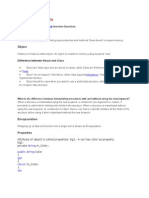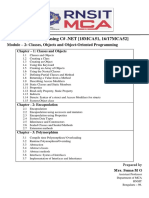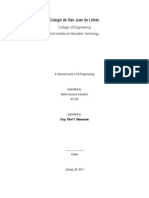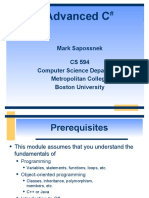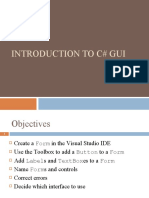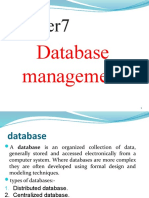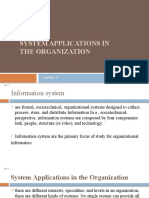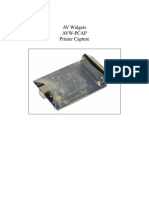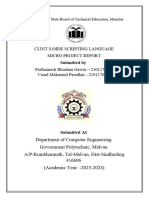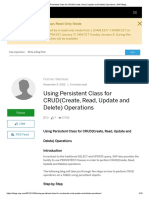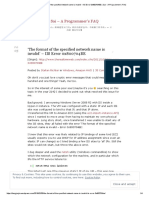0% found this document useful (0 votes)
126 views33 pagesDefining Classes: Classes, Fields, Constructors, Methods, Properties
1. The document discusses key concepts in object-oriented programming like classes, objects, fields, properties, methods, constructors, access modifiers, and static members.
2. It provides examples of defining simple classes with fields, properties, methods, and constructors. It also covers using classes by creating instances and invoking methods.
3. The document explains concepts like access modifiers, static and instance members, and how to define and use properties, constructors, and static members in classes.
Uploaded by
Mustafa AdilCopyright
© © All Rights Reserved
We take content rights seriously. If you suspect this is your content, claim it here.
Available Formats
Download as PPTX, PDF, TXT or read online on Scribd
0% found this document useful (0 votes)
126 views33 pagesDefining Classes: Classes, Fields, Constructors, Methods, Properties
1. The document discusses key concepts in object-oriented programming like classes, objects, fields, properties, methods, constructors, access modifiers, and static members.
2. It provides examples of defining simple classes with fields, properties, methods, and constructors. It also covers using classes by creating instances and invoking methods.
3. The document explains concepts like access modifiers, static and instance members, and how to define and use properties, constructors, and static members in classes.
Uploaded by
Mustafa AdilCopyright
© © All Rights Reserved
We take content rights seriously. If you suspect this is your content, claim it here.
Available Formats
Download as PPTX, PDF, TXT or read online on Scribd
/ 33











